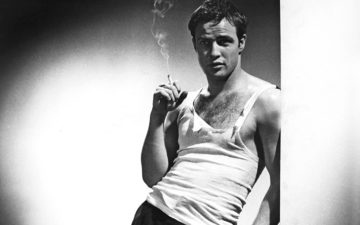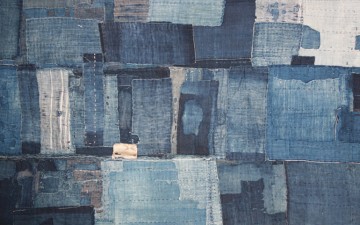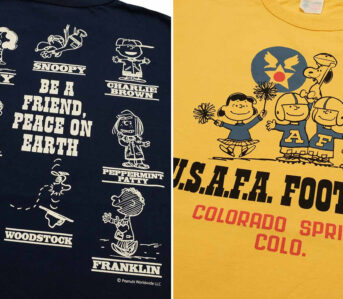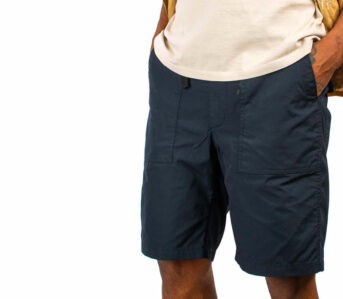The dusty hills were turning purple. You stare through the diminutive, square bunkhouse window as snoring cowboys stir one by one. The boss — el jefe — stomps in again and harasses the others awake. Spring is coming fast in northern Mexico. The last of the calves have been born and the bovines will be driven into pasturelands where they can grow fatter. There is an incredible amount to do with so few vaqueros to work the sprawling ranch.Rubbing your head with cotton-mouthed grogginess, you can smell the bubbling cauldron of beans next-door in the cookhouse. The scent is carried by the gentle early morning breeze. Stumbling into your clothes, you cinch your jerga jacket signaling the start of your day in the saddle. The stout wool weave offers some welcome protection. This fabric matches the blanket that fits under the saddle.
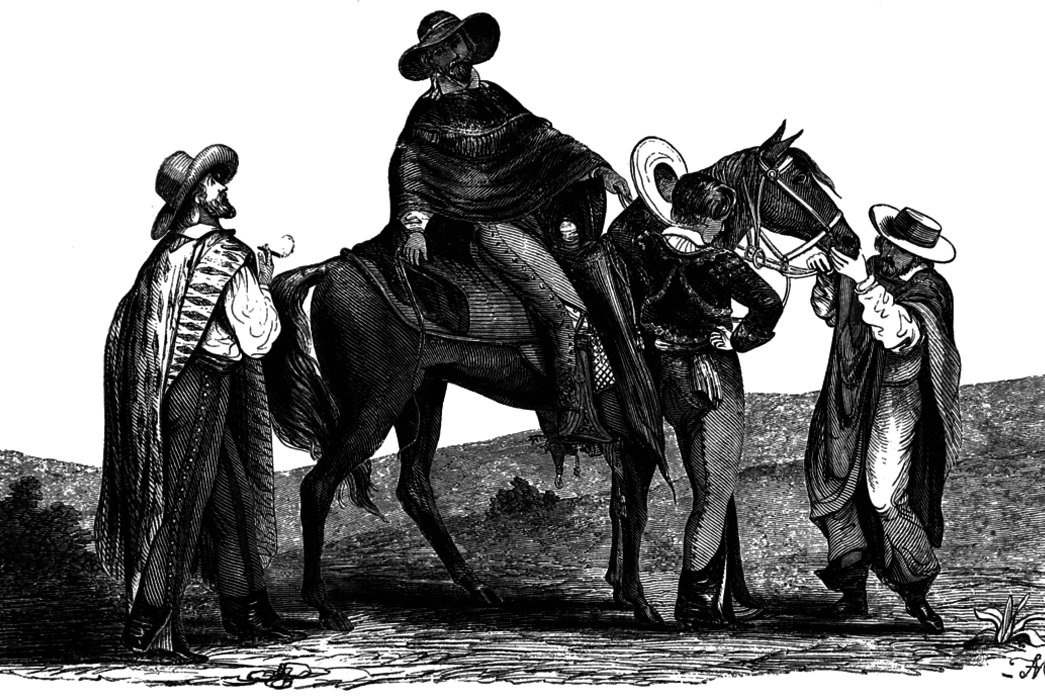
Mexican rancheros as illustrated by Brantz Mayer, published 1852. Image via Mexico, Aztec, Spanish, and Republican/Wikipedia
That morning after breakfast, you get thrown from your horse when he spots a rattlesnake coiled in the shade of a boulder. As you draw your pistol, the young horse rears back onto its hind legs. You sit deep in the saddle as the beast arches its back and launches from the ground like a bowstring recoiling from a mighty bolt. That’s when your world goes sideways, literally. Being dragged helplessly behind with one foot still in the stirrup is less than ideal. The jerga serves a role akin to expensive leather in this case; it protects your underclothes and skin from being severely abraded. Freeing yourself from the death drag, the better part of an hour is spent trying to wrangle the animal wandering through the prickly cholla. You were lucky. A vaquero lives and dies by luck.
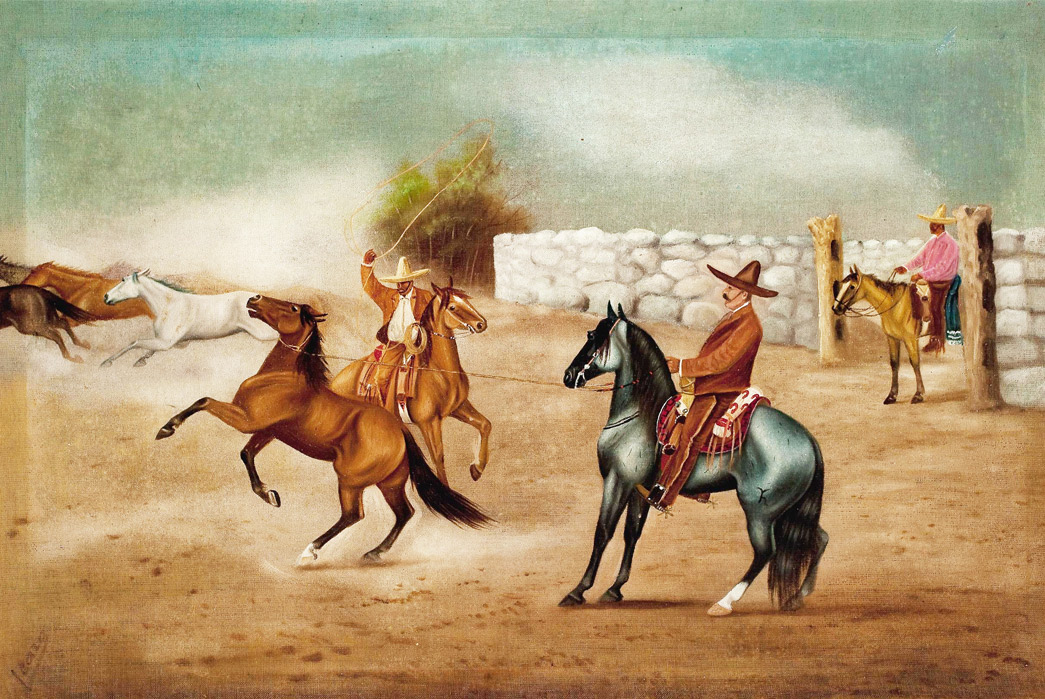
Un Buen Lazo by Ernesto Icaza Sánchez (1916). Image via Museo Nacional de Arte/Wikipedia
Venerable Looms
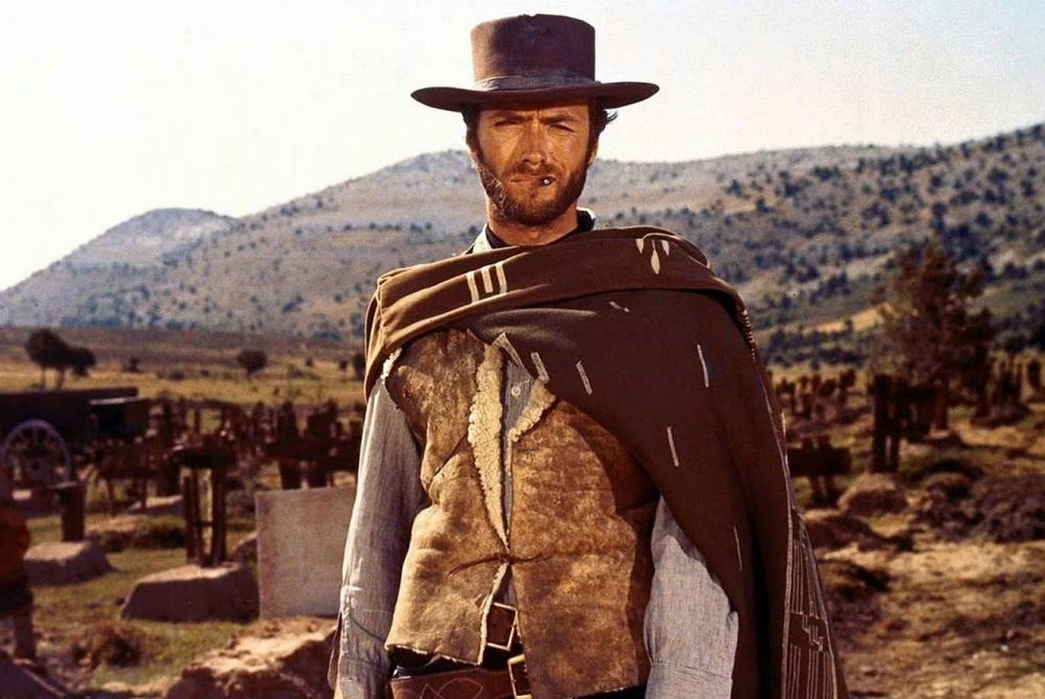
Clint Eastwood iconized the gabán, with a Native American influence in the pattern, in A Fistful of Dollars (1964). Image via The Irish Times.
Textile making has existed in the American Southwest and northern Mexico for centuries. After the Spanish arrival, two significant tribes exemplified this ancient art form in the post-contact era; the Pueblo and the Navajo. Christopher Columbus introduced sheep — and thus wool —to the continent. However, cotton had been available for blankets and other tapestries prior to wool. In fact, scholars believe that the Navajo picked up weaving from the Pueblo sometime between 1000 A.D. and the 17th century. In both cultures and with both fabrics, tribal artists used bold geometric designs and colors to realize distinct pieces that told individual stories. With the Europeans, new sources of dye and other materials became available.
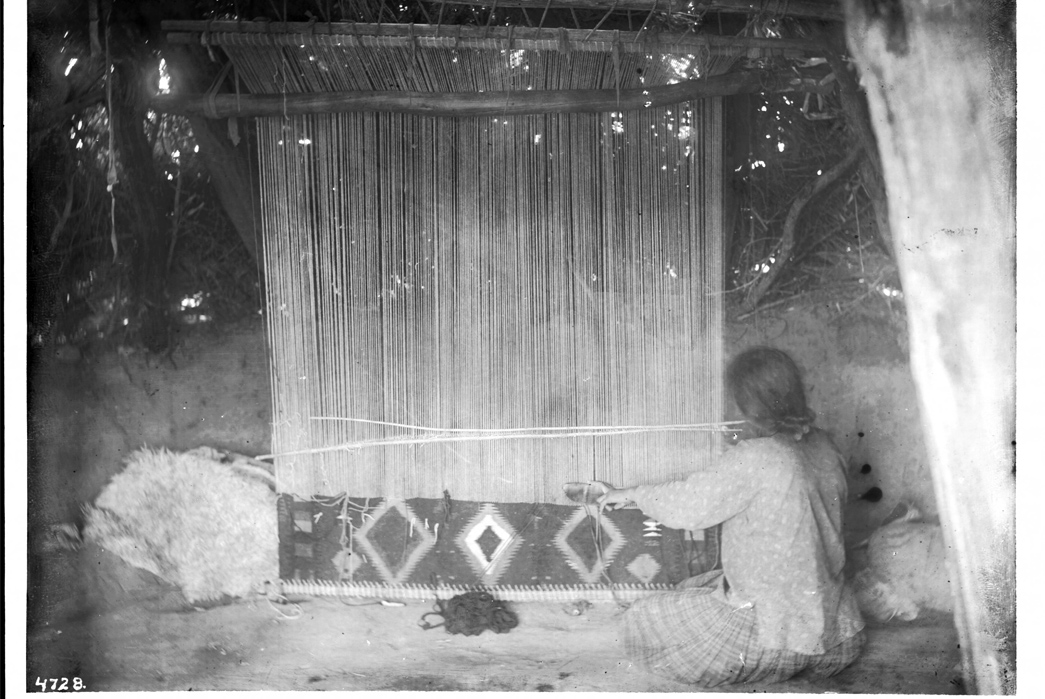
A Navajo woman weaving a blanket on her loom, ca. 1900. Image via George Wharton James/Wikipedia.
New Spain
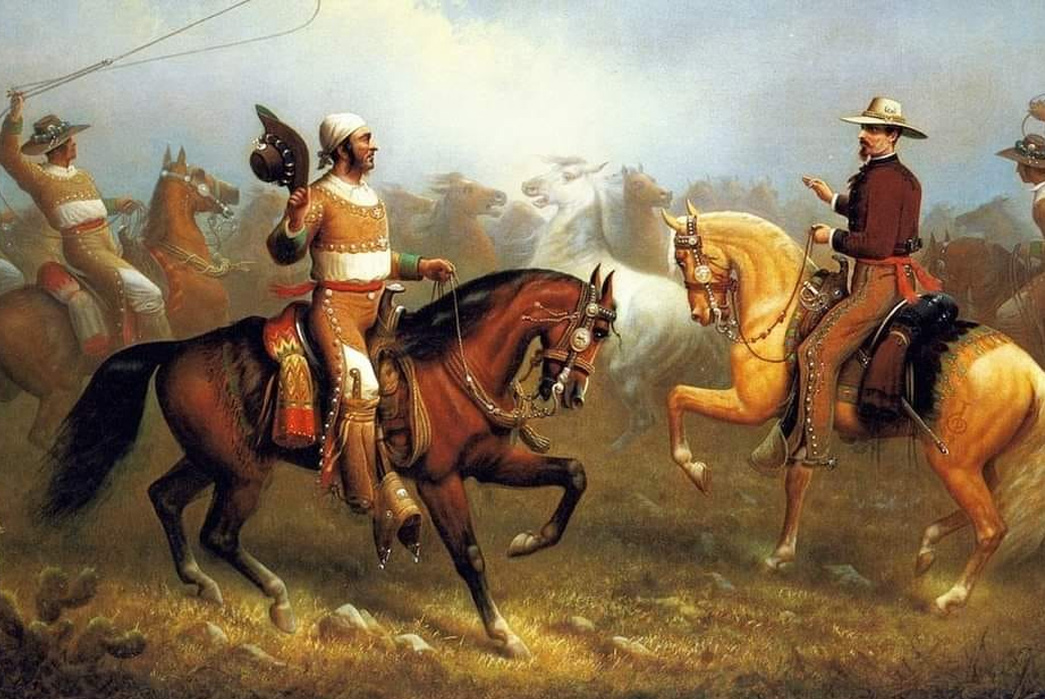
Vaqueros Roping Wild Horses by James Alexander Walker (1877). Image via Charro Literario/Facebook.
Any good blanket coat starts with one thing: the blanket. Across the Spanish colonies, jerga is no exception to this rule as it forms the foundation for many useful, everyday items. The term, which can also be translated as “jargon,” has its roots in the Latin word “sērica” (“silks”) and is alternatively spelled “xerga” in Spain. Made of wool in the Spanish tradition, colonists in what would become Mexico and the American Southwest were keen to propagate it. Historic jerga are described as rather plain compared to modern examples. In its most utilitarian form, it was left in the creamy tan color of raw, undyed wool. It was in this basic form that everyday things were fashioned; from wagon tarpaulins to blankets and gabáns (which are a type of poncho).
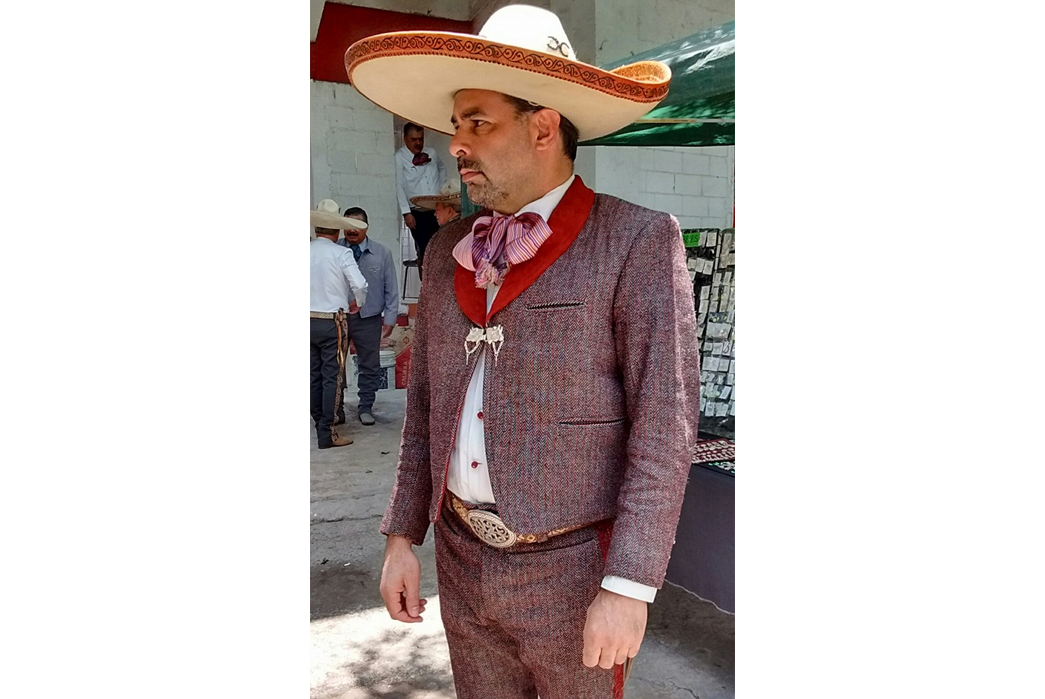
A modern suit of jacket and trousers made from red jerga. Image via Plateria Guadarrama/Facebook.
As Hispanic culture evolved alongside native culture, so did jerga. Rather than hide the coarse woolen, it was further embellished with bold colors, intricate trim, and embroidery. Even traditional native American motifs. The classic singing vaquero — who is regarded as the warrior poet of Mexican culture — is one who is decked out in a vivacious jerga with an ornate sombrero and a fine guitar. Versions of the cloth exist in other Spanish-speaking countries as well. It’s worth noting that the word “vaquero” may have given us the English slang for cowboy; “buckaroo.” Similarly, the legend persists that the “tan galán” (“very handsome”) hat became the famous “ten-gallon” hat of American cowboy lore.
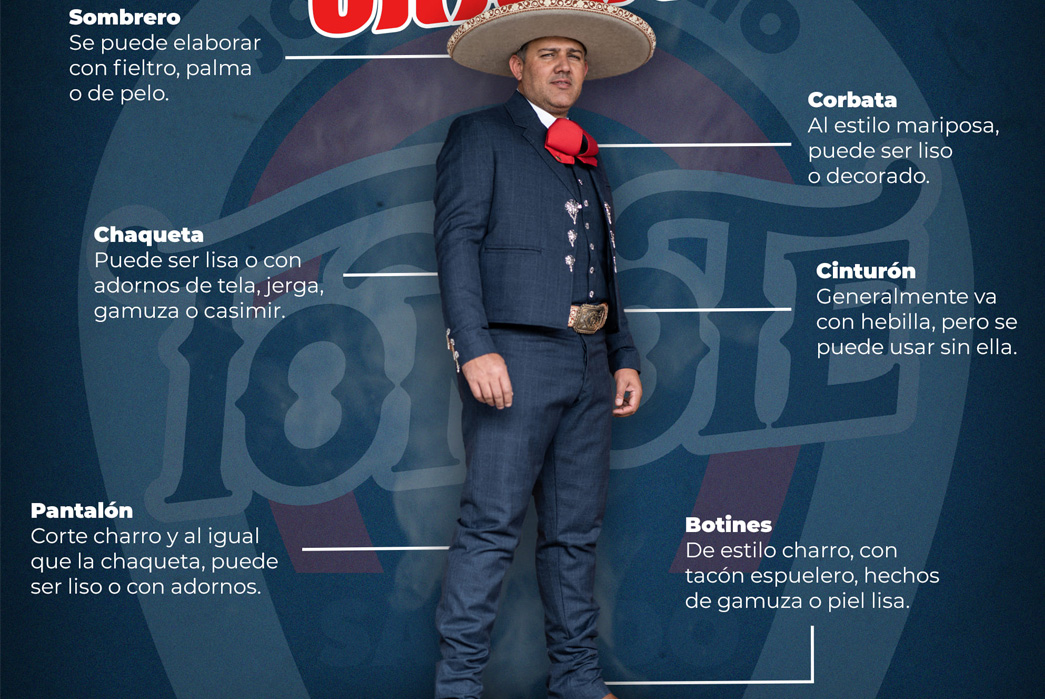
Clothes of the Charro,” which is another term for the Vaqueros or Mexican cowboys. According to this graphic, the jacket and trousers can be made from jerga, suede, or cashmere wool to match. In addition, they can be plain or trimmed with decorations. Image via José Antonio TOÑOT Salcedo/Facebook.
Evidence of cultural interplay between Spanish and Native American traditions even extended to neighboring countries. A traveler in Gutamala mentioned in 1871, “My acquisitions in this respect were limited to a simple jacket of jerga, and a straw hat, both the veritable handiwork of the Indians [native peoples].”
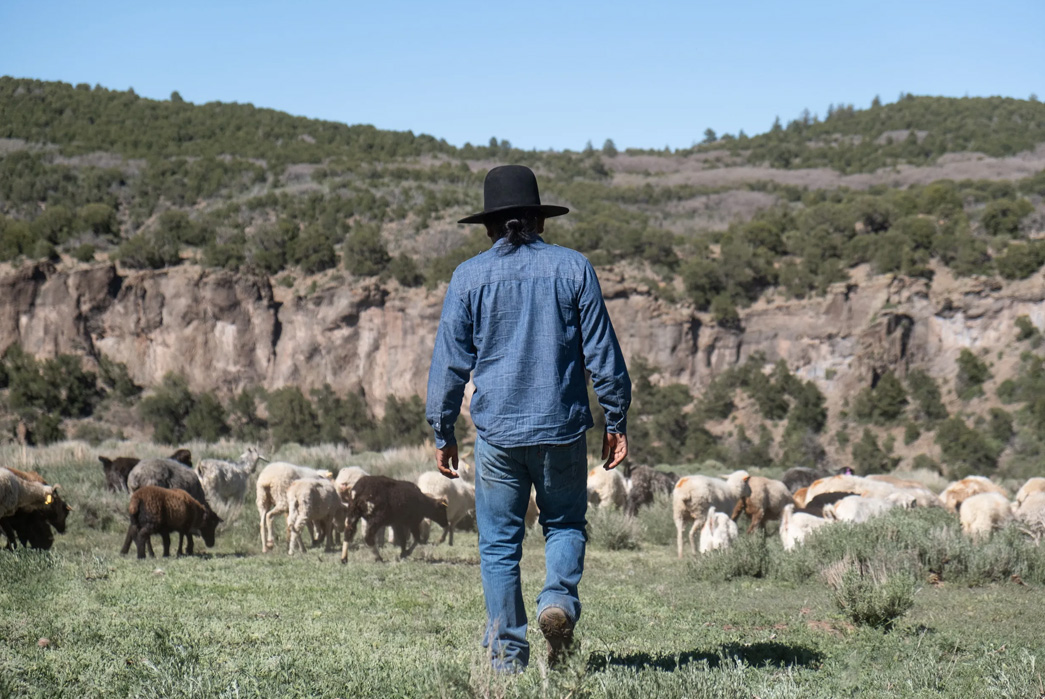
Shepherd Eliseo Curly tends his flock. Sheep herding remains an important industry for the Navajo people. Image via Heath Herring/Stetson Stories.
However, using wool for outerwear isn’t a concept claimed solely by Hispanophones. While Spanish colonists were fashioning jerga into a cultural phenomenon, a different group of North American colonists was propagating their own version for trade. Blanket coats, durable and inexpensive, hit their full-length stride in colder climates.
The Capote
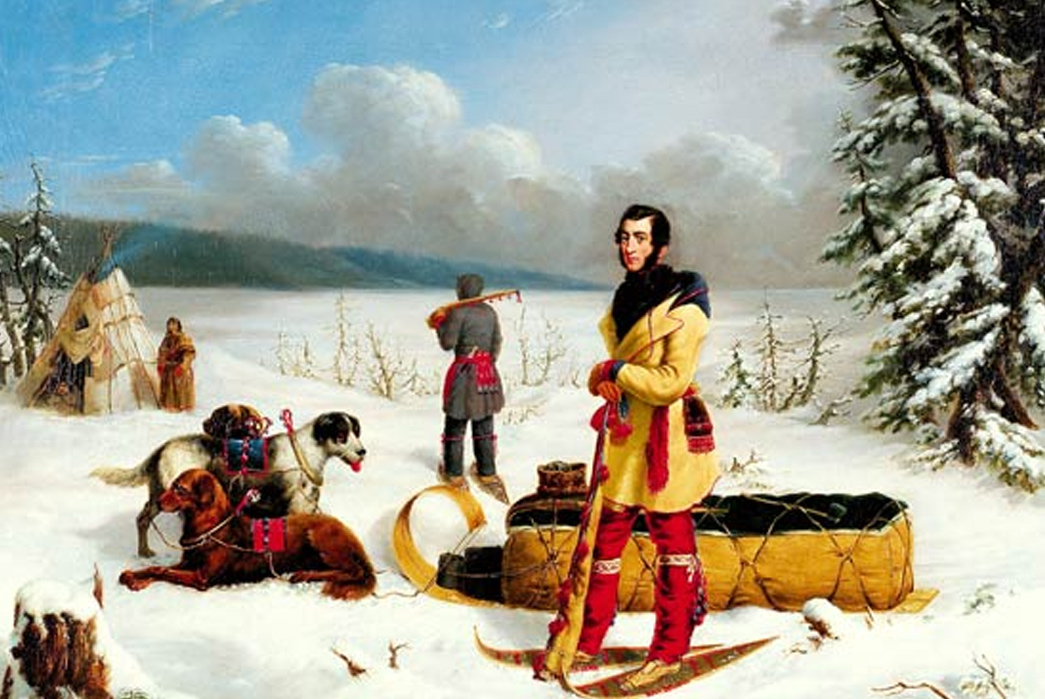
The Surveyor: Portrait of Captain John Henry Lefroy by Paul Kane (ca. 1845). Lefroy is depicted in the dress of a French-Canadian voyageur complete with a capote. Image via Thomson Collection at the Art Gallery of Ontario/Wikipedia
A capote is a hooded long coat that derives its name from the French word capot, or “hood.” In the Candian wilderness, these warm yet uninhibiting garments were famously made from blankets for Francophone fur trappers. Freedom of motion was critical as it meant that hunting could be done even in the dead of winter. Blankets of every variety could and would be made into capotes. An account from the U.S. state of Illinois published in 1880 recalls,
“The white blanket coat, known as the capot, was the universal and eternal winter coat for the winter with the masses. A cape was made of it that could be raised over the head in cold weather… The reason that I know these coats so well is, that I have worn many in my youth, and a working man never wore a better garment. Dressed deer skins and blue cloth were worn commonly in the winter for pantaloons. The blue handkerchief and the deer-skin moccasins covered the head and feet generally of the French Creoles. In 1800, scarcely a man thought himself clothed unless he had a belt tied around his blanket coat, and on one side was hung the dressed skin of a pole-cat [sic.], filled with tobacco, pipe, flint, and steel. On the other side was fastened, under the belt, the butcher-knife [sic.].”
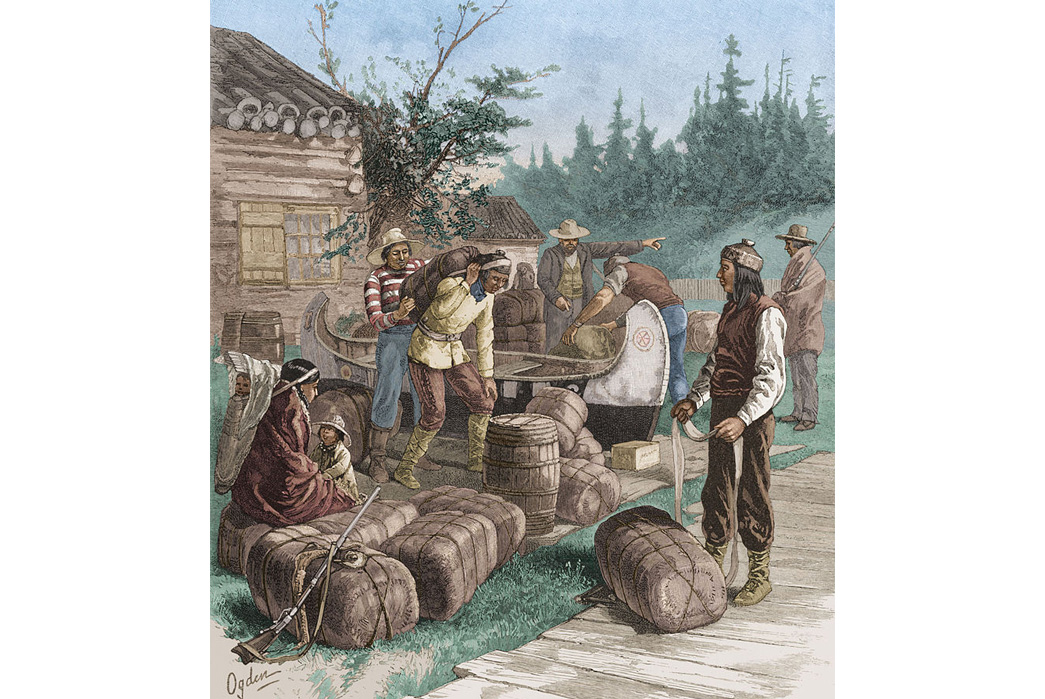
Harry Odgen’s depiction of trading at a Hudson’s Bay Co. trading post, published in 1882. Image via Hulton Archive/Wikipedia.
The Hudson’s Bay Company, a juggernaut of colonial enterprises, had a ready supply of blankets ready to ship to the New World. From the 17th century onwards, the capote became a French-Canadian symbol for both European colonists and indigenous peoples.
Military Use and “Dutch Blankets”
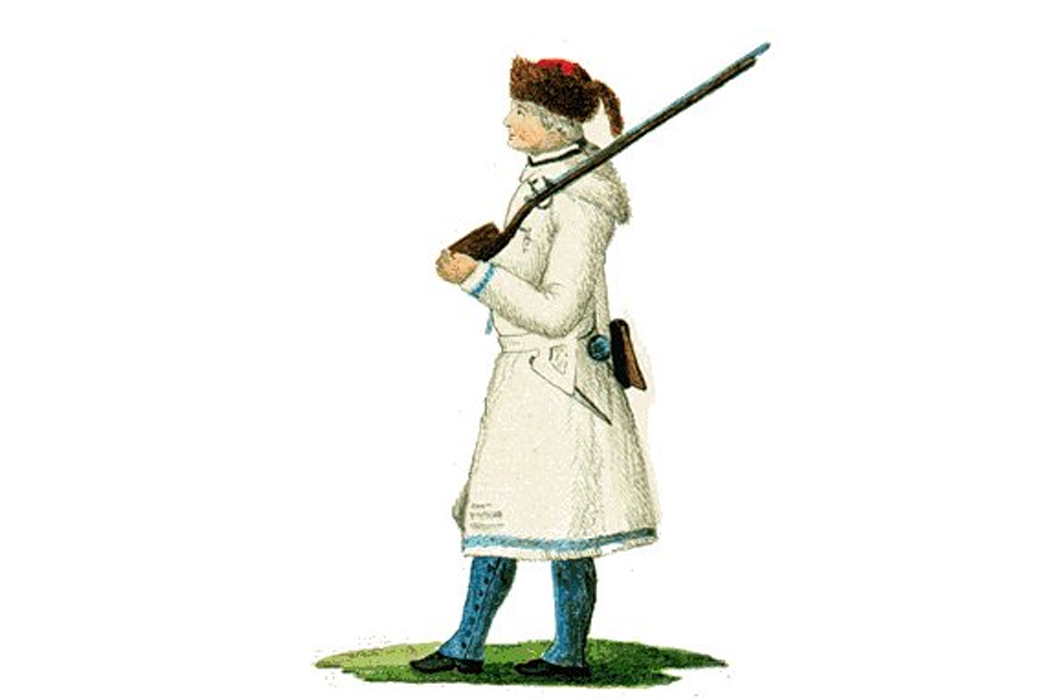
Friedrich von Germann sketched this British soldier in North America sporting a capote, likely made from a Hudson’s Bay Co. blanket (ca. 1777). Image via Of Sorts for Provincial/Blogspot.
Besides trappers and traders, the utility of the blanket coat was realized by soldiers in the American Colonies during the 18th century. Fashion was traveling south. These versatile coats were welcomed in a variety of climates — wearing wool was universal at this time and afforded relative comfort and durability. Interestingly, some references mention coats from “Dutch blankets.” These seem to have been especially prevalent in Virginia and Pennsylvania.
These distinct blanket coats even became associated with the founding of the United States itself when, “In the time of the revolutionary war [sic.] many of the American officers introduced the use of white Dutch blankets for great-coats [sic.]. After garments were considerably worn, it was customary to rip and turn them, particularly coats.” To “rip and turn” a garment, in this context, means ripping the seams and reconstructing the piece with the worn fabric turned inward.
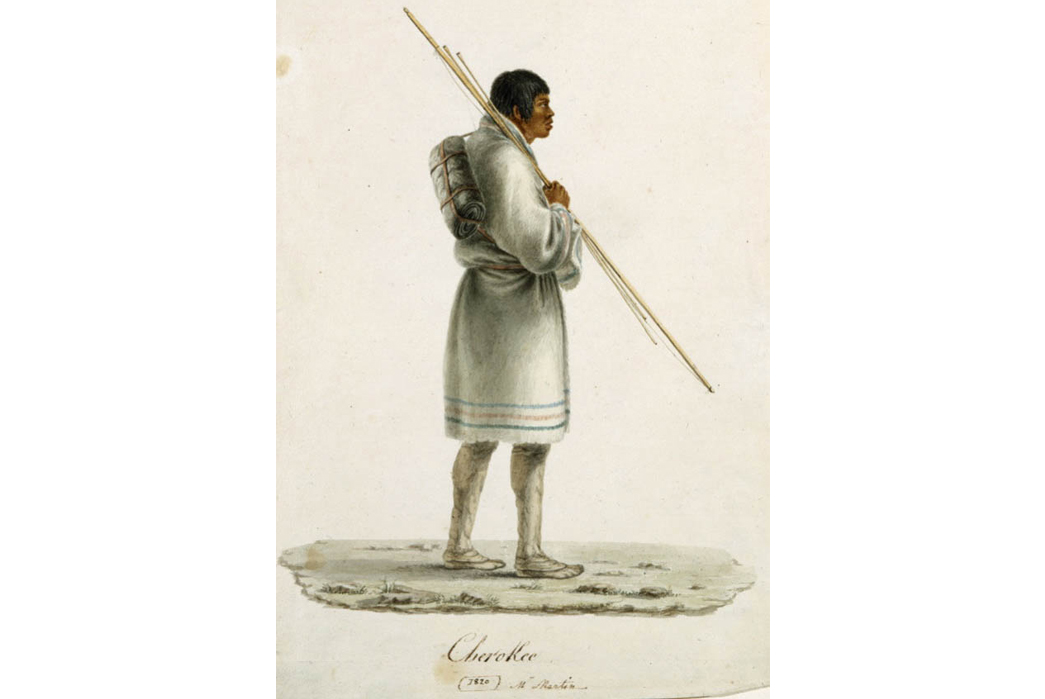
A member of the Cherokee tribe of Native Americans, “Mr. Martin,” is wearing what is likely a Dutch blanket coat in this 1820 study. Sketched by the Henriette Rouillé de Marigny. Image via the New York Historical Society.
As the name implies, Dutch blankets were imported from the Netherlands and their hallmarks included a twill weave, white/natural color, with several sets of multi-colored stripes on either end and floral designs in each corner. Throughout the 18th and 19th centuries, these blankets weren’t bound to a rigid design and were prone to a lot of variation when it came to colors and patterns. However they looked, Dutch blankets were beloved by soldiers and civilians alike across many ethnicities.
Hudson’s Bay “Point” Blanket
In communication, simple is often better. Faced with the prospect of encountering many languages on the Canadian frontier, including European and indigenous tongues, The Hudson’s Bay Co. (HBC) devised an ingenious point system for sizing blankets; the more parallel black lines were stitched above the selvage, the larger the blanket. Sizes could easily be determined even when the blanket was folded.
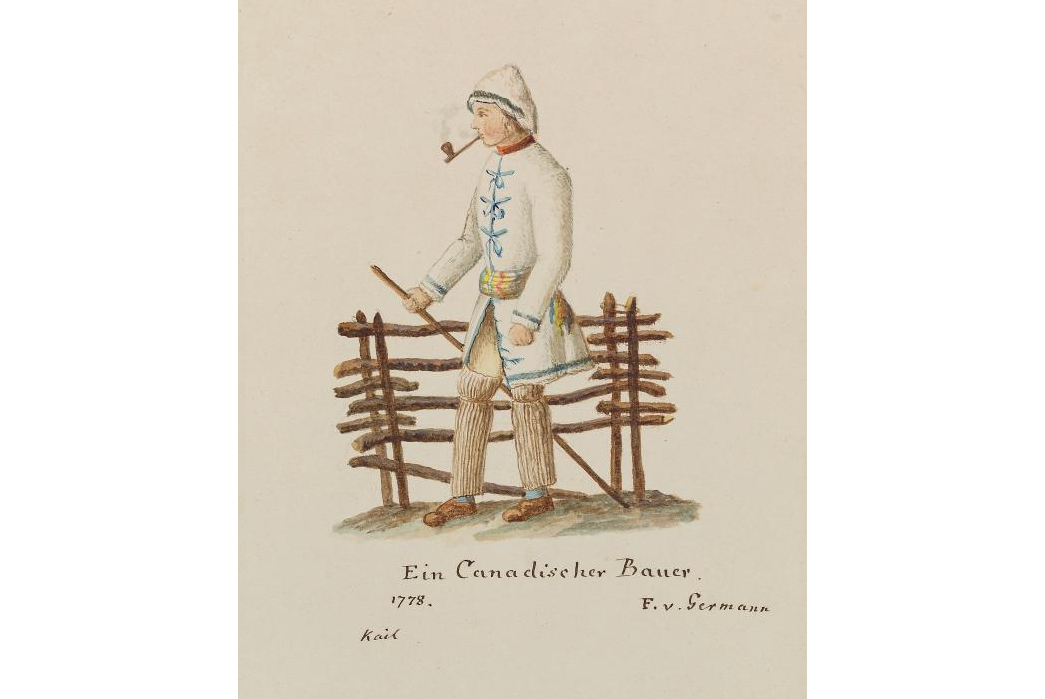
A Canadian in a blanket coat that resembles the earliest HBC Point Blankets. This sketch was made by Friedrich von Germann in 1778. Image via New York Public Library/Wikipedia.
Other hallmarks of the Hudson Bay blankets include several sets of colored stripes which contrast the creamy wool material. In the 18th century, a single red or blue stripe was used. A 1798 order to an English mill called for, “…30 pair[sic.] of 3 points to be striped with four colors (red, green, blue, yellow) according to your judgment.” Colorfast dyes allowed a rainbow of stripes to become standard by the middle of the following century; green, red, yellow, and indigo in that order from the inside out. This latter scheme is still in use today, for blankets and coats.
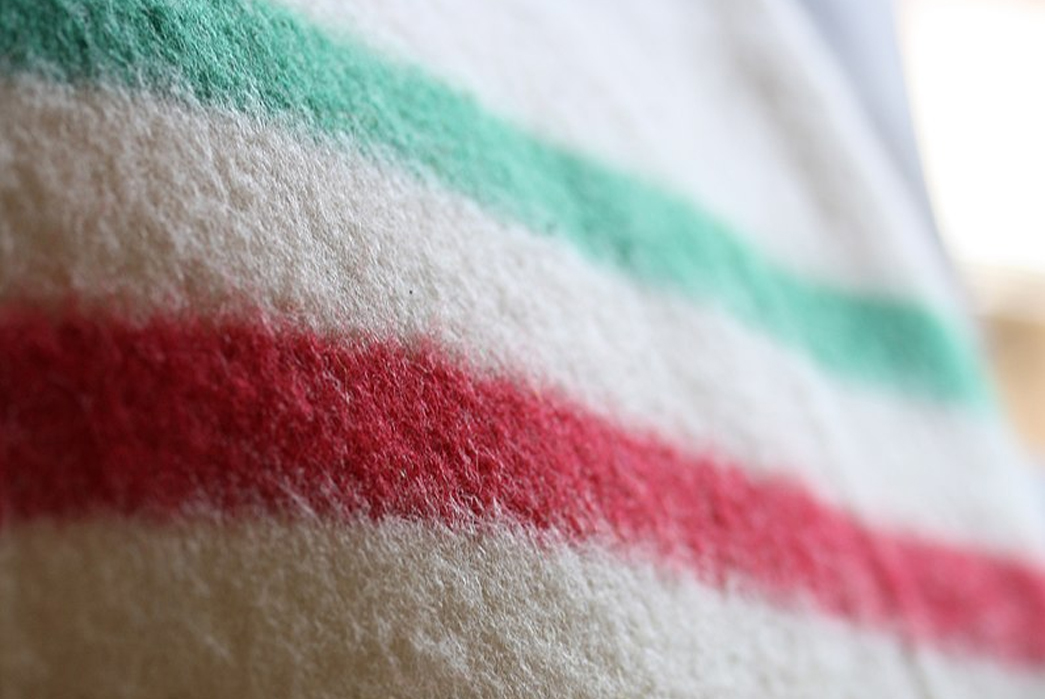
The classic HBC Point Blanket striping. Image via Danielle Scott – Canadian Warmth/Wikipedia.
In an odd turn of events, the original Mackinaw coats were made from HBC Point Blankets in a pinch. British Captain Charles Roberts faced a Canadian conundrum in 1811 when he was unable to procure winter coats for his men. The solution was ingenious. He commissioned local native women to make coats from HBC 3.5 point blankets but with a twist; a shorter length to allow marching in deep snow. His design proved a success and this double-breasted garment has enjoyed considerable success, especially in the commercial market. In the following century, the American military adopted its own variant in olive drab.
The Revival
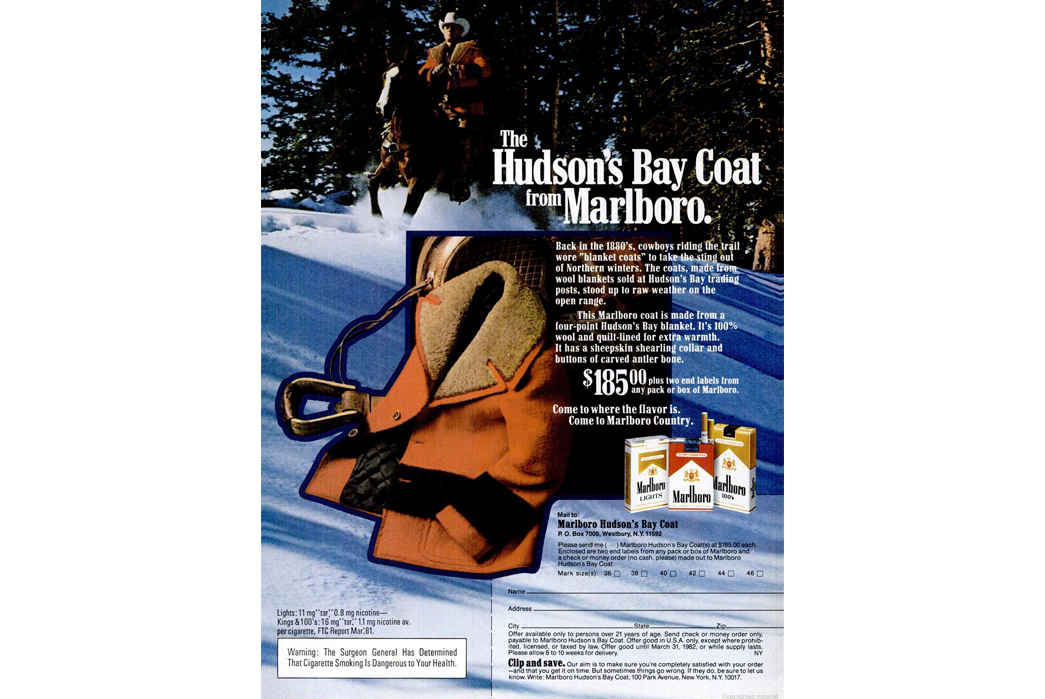
A 1981 promotion for the Marlboro x Hudson’s Bay blanket coat. This coat resembles a mackinaw with a fleece collar rather than a traditional capote. Image via New York Magazine/Google Books.
The blanket coat’s strong association with western wear became fully formed in the 20th century. Mackinaws, already established in the North American wardrobe since the 1810s, had become a sensation by the 1920s and ’30s. With heavy-weight wool fabric, it seemed inevitable that new blanket coats–a garment that allowed ample freedom for outdoor activities–would draw inspiration from rugged sources; the Western deserts and the Canadian tundra. Manufacturers were thus keen to be bold. Bold patterns. Vivacious advertising.
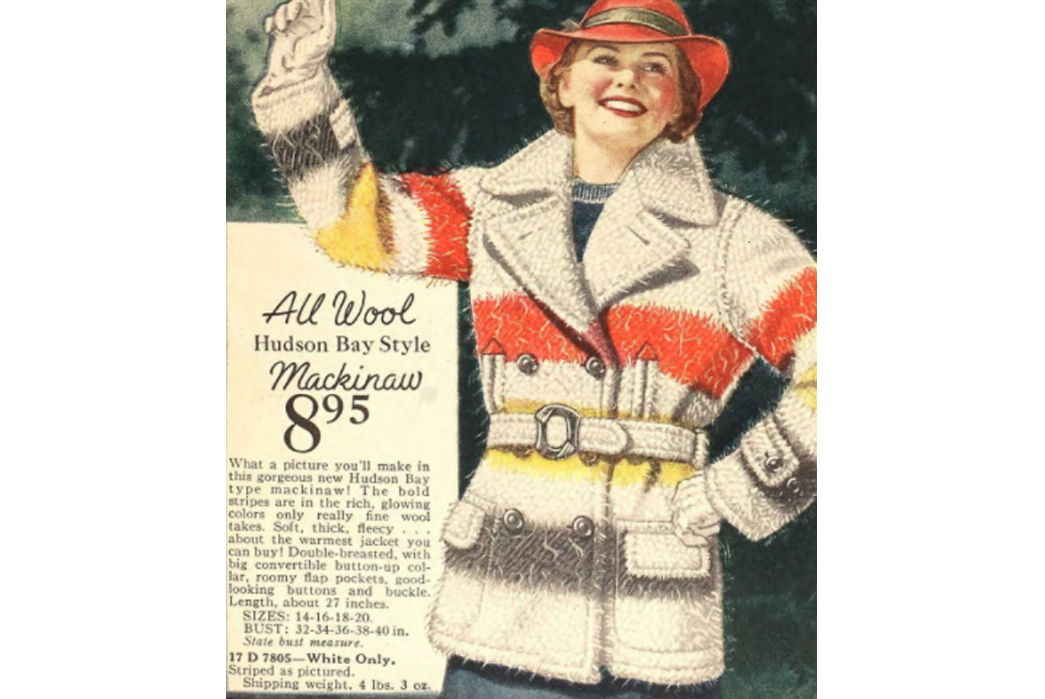
A 1930s advertisement for an HBC mackinaw that was inspired by their blankets. Image via Wikipedia.
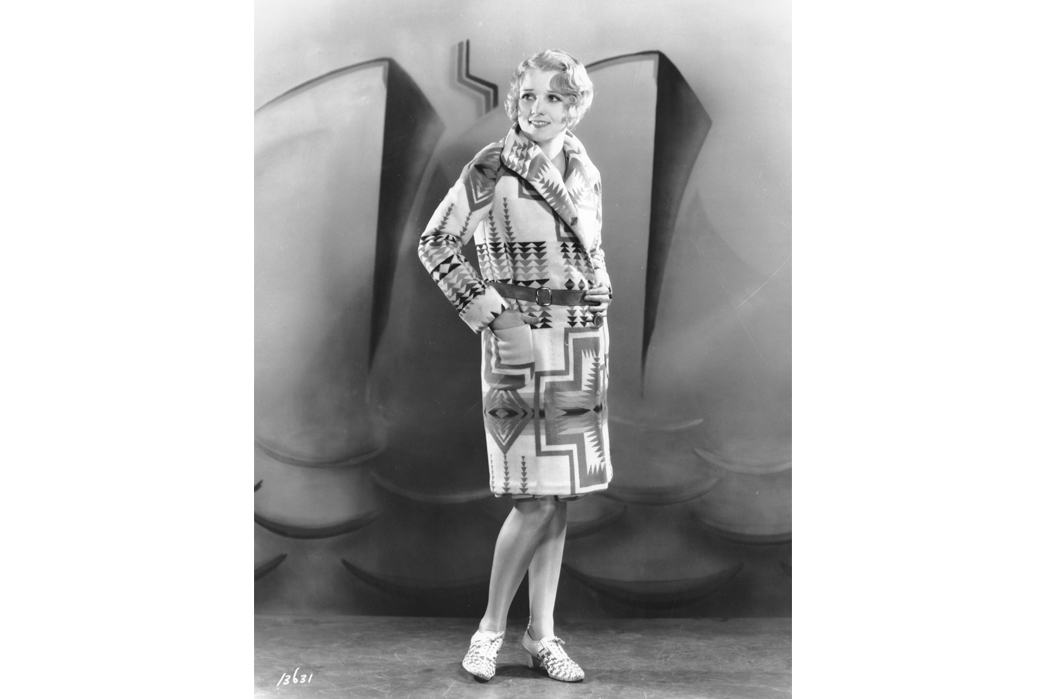
Pendleton had their own version of the blanket coat in the ’30s–this one was inspired by the American Southwest. Image via Pendleton Woolen Mills.
Chimayo Weavers

This coat was presented by Tom Mix to fellow actor Reb Russell in the 1930s. Image via Kansapedia: Kansas Historical Society.
The Chimayo weaving tradition centers around northern New Mexico in the United States. It is sometimes called Ortega after one of the original settlers of Chimayo. Combining Hispanic and Native American traditions, these artists bring the blanket coat story full circle. In the first 30 years of the 20th century, a fledgling market for “western goods” was burgeoning. The advent of cowboy films spurred this. Early stars like Tom Mix dressed the part, on and off set, and became idols for the American public. In fact, Mix is commonly regarded as the first of Hollywood’s superstars. Garment makers saw an opportunity.
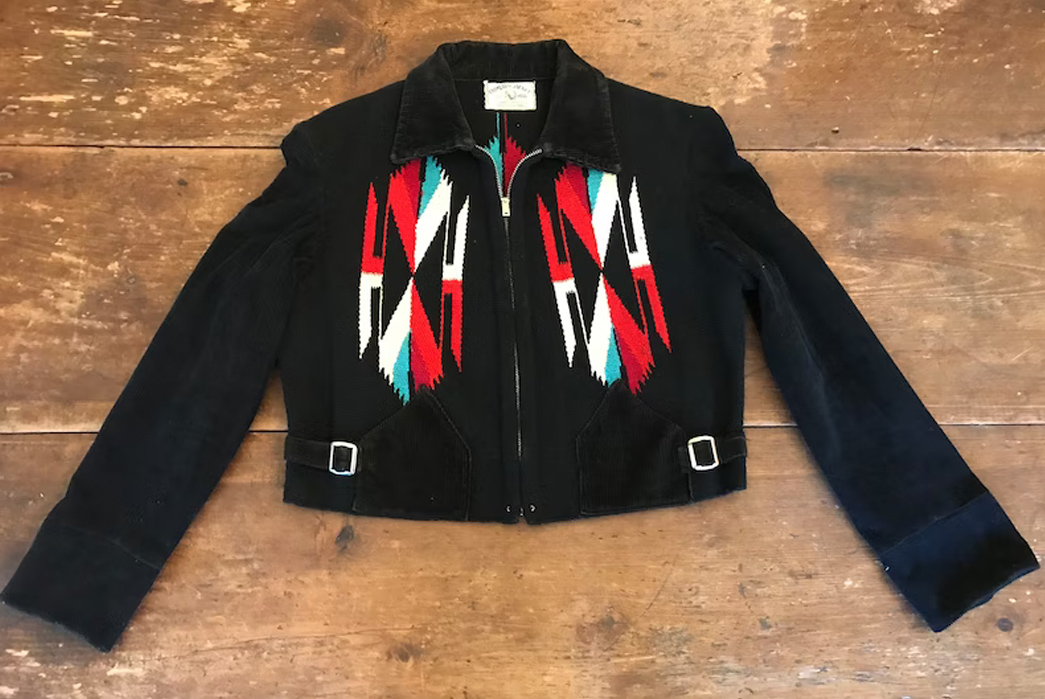
A Chimayo jacket dated to the 1940s-50s. Image via Luckyduckvintage1/Etsy.
With the help of the Atchison, Topeka, and Santa Fe Railroad–along with their partner and restauranteur Fred Harvey–many Americans became infatuated with Southwestern curios. The Chimayo weavers had already built a reputation with bold tapestries going back to the days of New Spain. Their influence was felt during the blanket coat revival. Many large manufacturers produce Chimayo-inspired patterns today.
Finding Blanket Coats Today
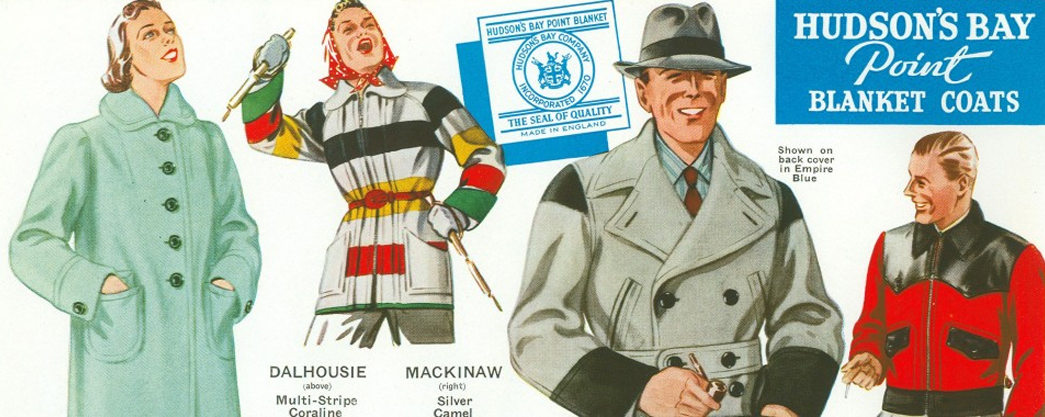
Vintage selections. Image via Hudson’s Bay Company History Foundation.
Blanket coats are the ultimate outerwear for adventuring. You don’t have to rope cattle or trap beavers to appreciate their advantages. Amazingly, some of the classics are still offered by their original makers.
Chimayo Weavers
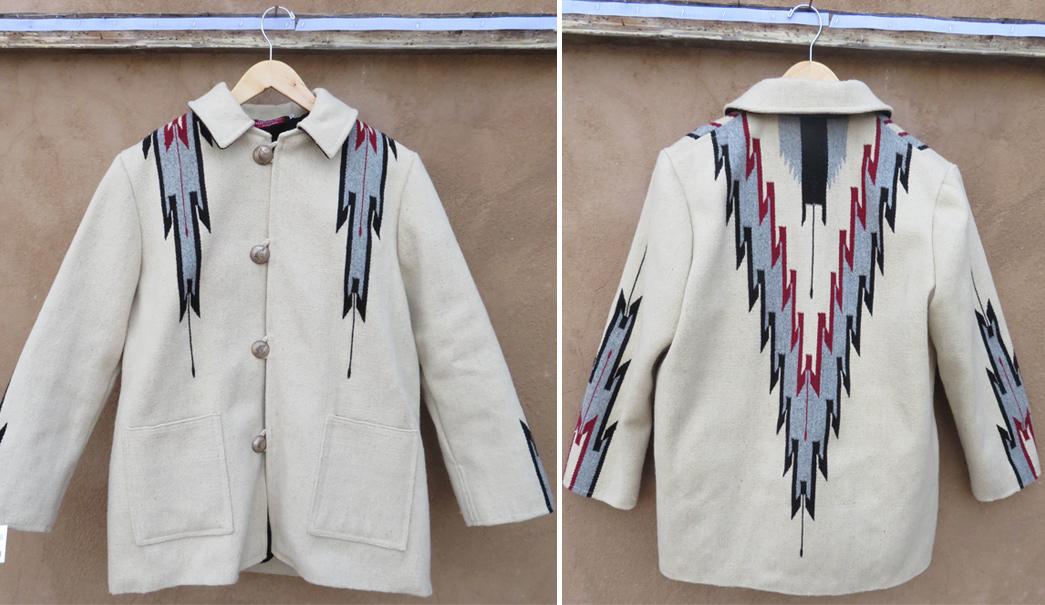
This particular company’s portfolio has more conservative patterns with a sophisticated feel. The cream color of this coat provides the perfect contrast for sleeve and shoulder ornamentation, which recalls the 1930s coat purchased by Tom Mix above. Embossed silver buttons are also indicative of Hispanic influence.
Coat 12202132 is available as a one-off from Chimayo Weavers for $950.
Hudson’s Bay Company
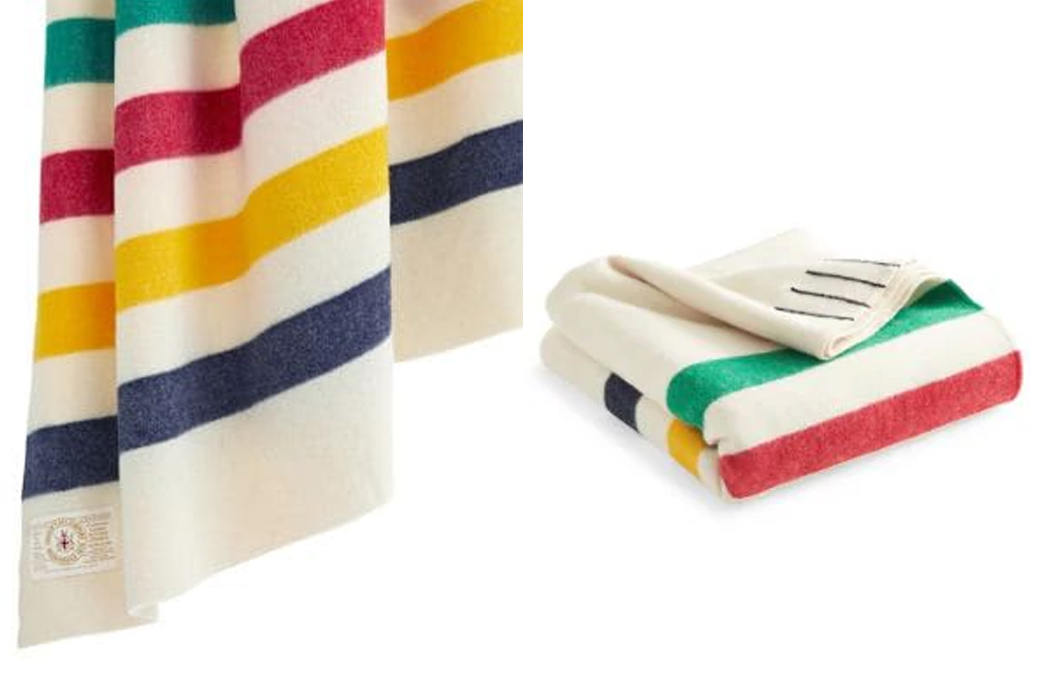
I’m not telling you to cut up a $325 blanket to make a capote, but the Point Blanket is still made in England and sold under the HBC brand after several hundred years. When it comes to authenticity, it doesn’t get any better than this.
The 3.5 points Multistripe Point Blanket is sold by The Bay for $325.
Pendleton
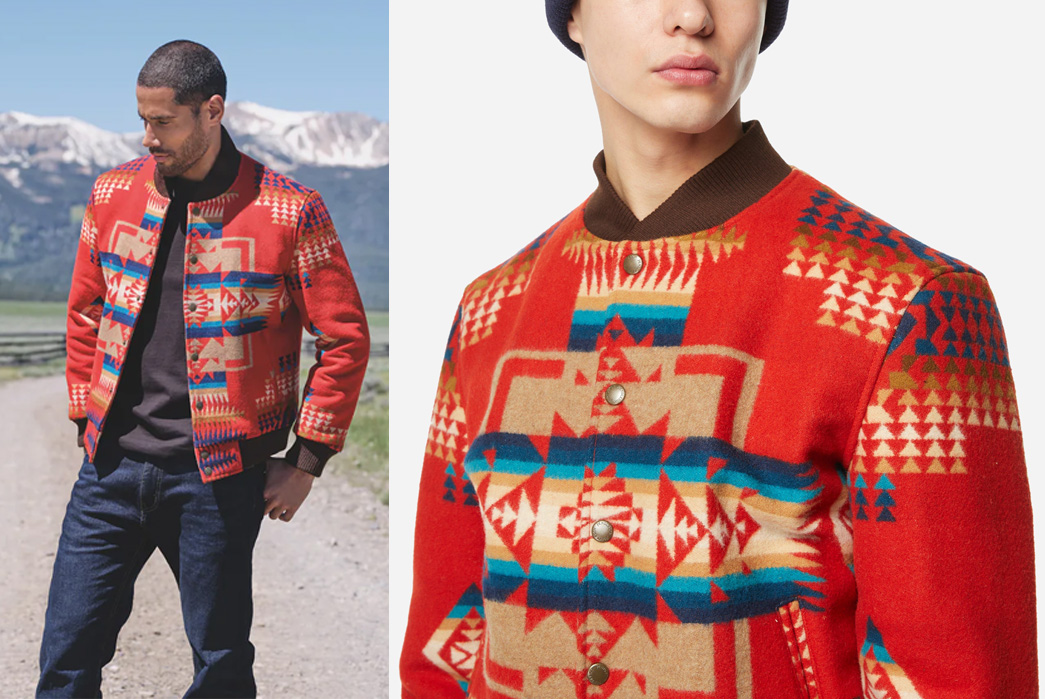
This jacket is very much inspired by Chimayo weaving. Vibrant, but tasteful like the work of New Mexican folk artists, this garment is a tribute to a long tradition. The pattern is reminiscent of American midcentury fashion.
The Men’s Quilted Gorge Jacket is available from Pendleton for $249.
Gallery
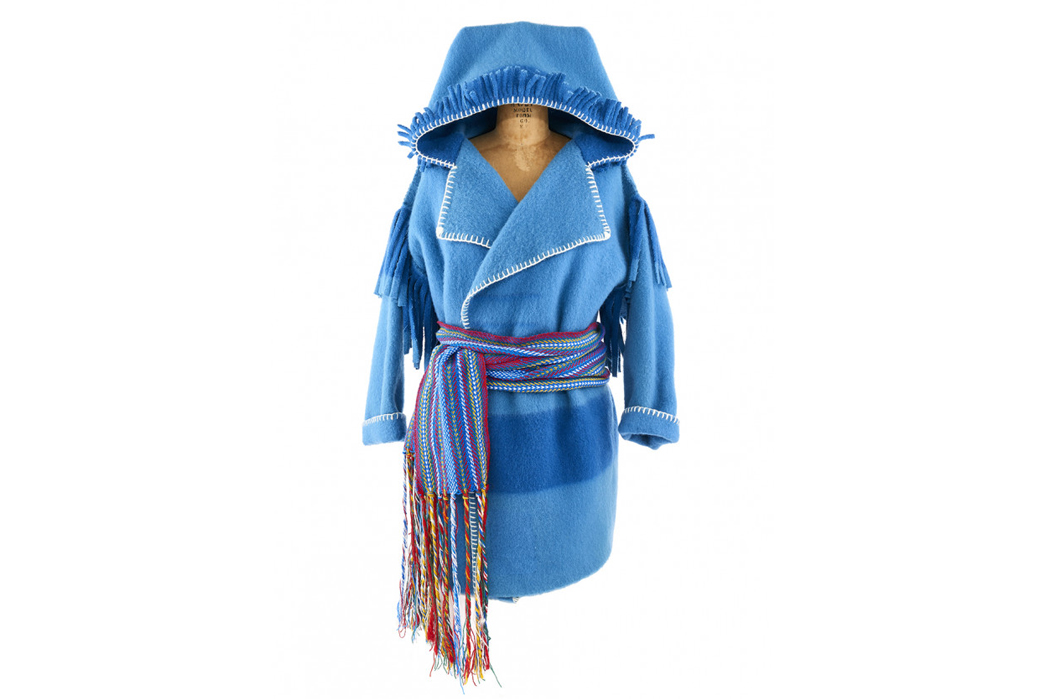
An example of a Métis tribe capote and L’Assumption sash. Image via Hudson’s Bay Company History Foundation.
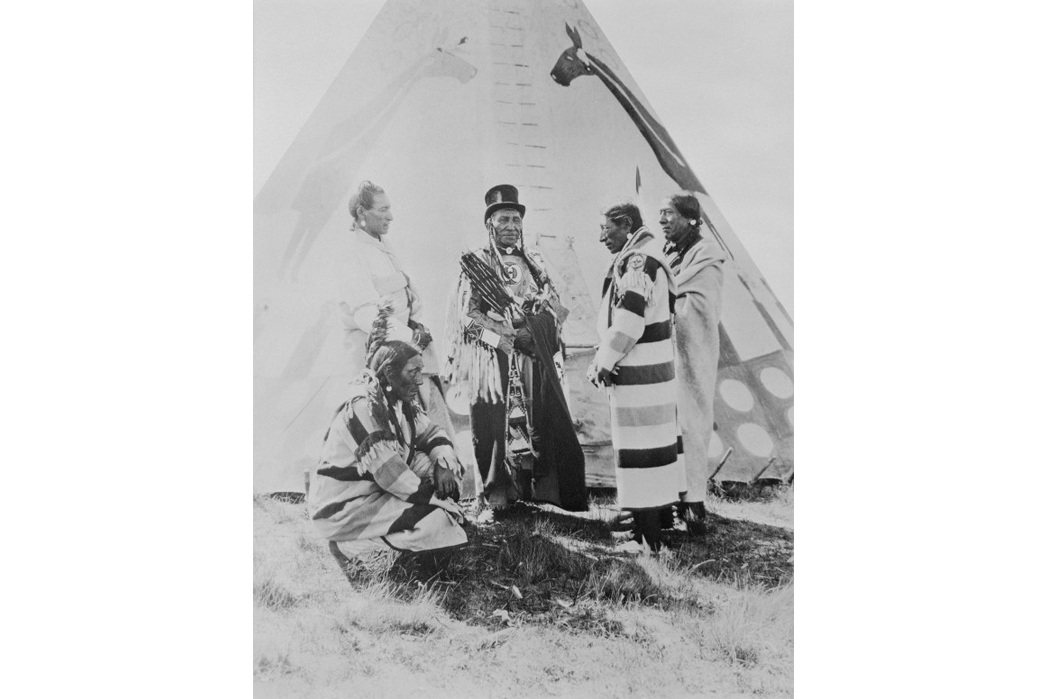
Men of the Blackfoot tribe in the 1880s. Two of them are wearing blanket coats. Image via Hudson’s Bay Company History Foundation.
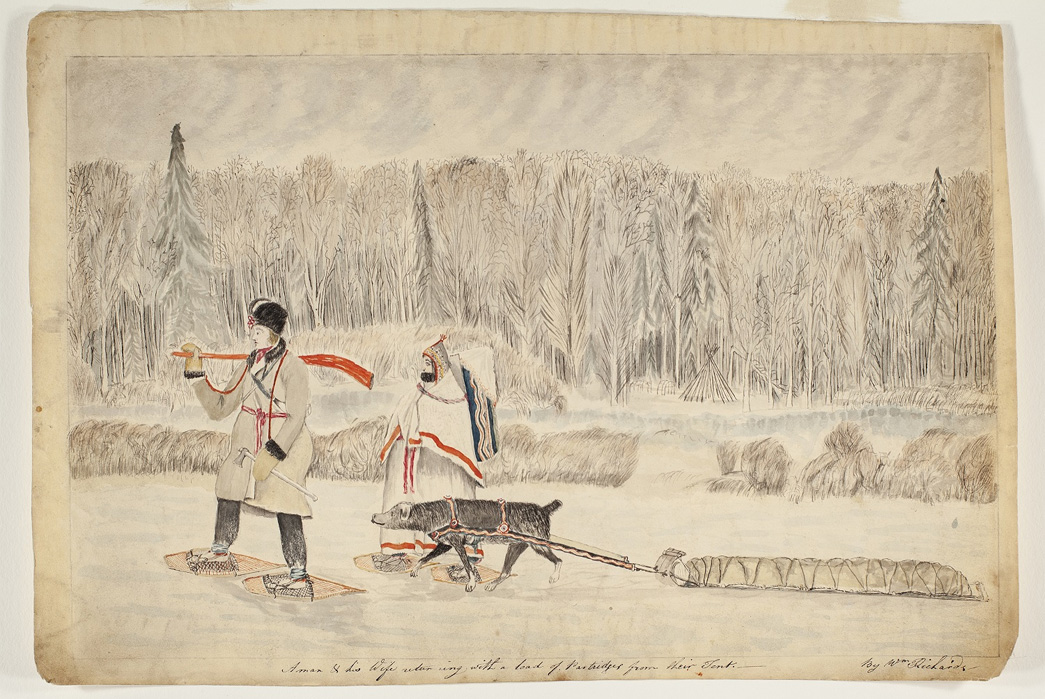
A man and his wife return from a successful partridge hunt in this ca. 1807 watercolor by William Richards. Image via Hudson’s Bay Company History Foundation.
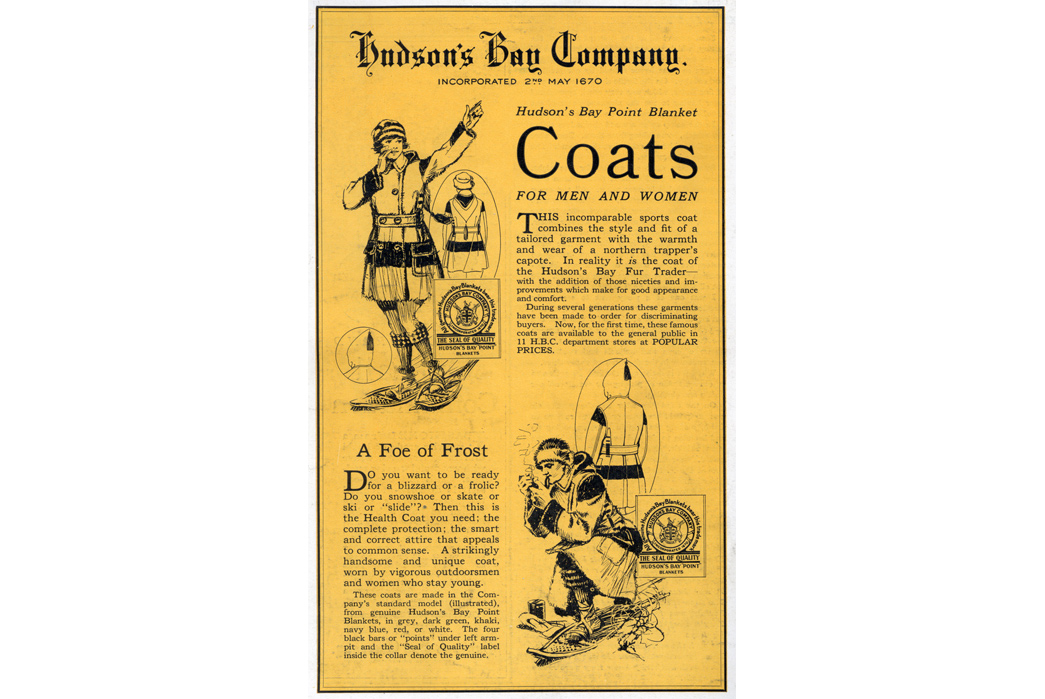
An advertisement from 1922 markets HBC Point Blanket coats to men and women. Image via Hudson’s Bay Company History Foundation.

